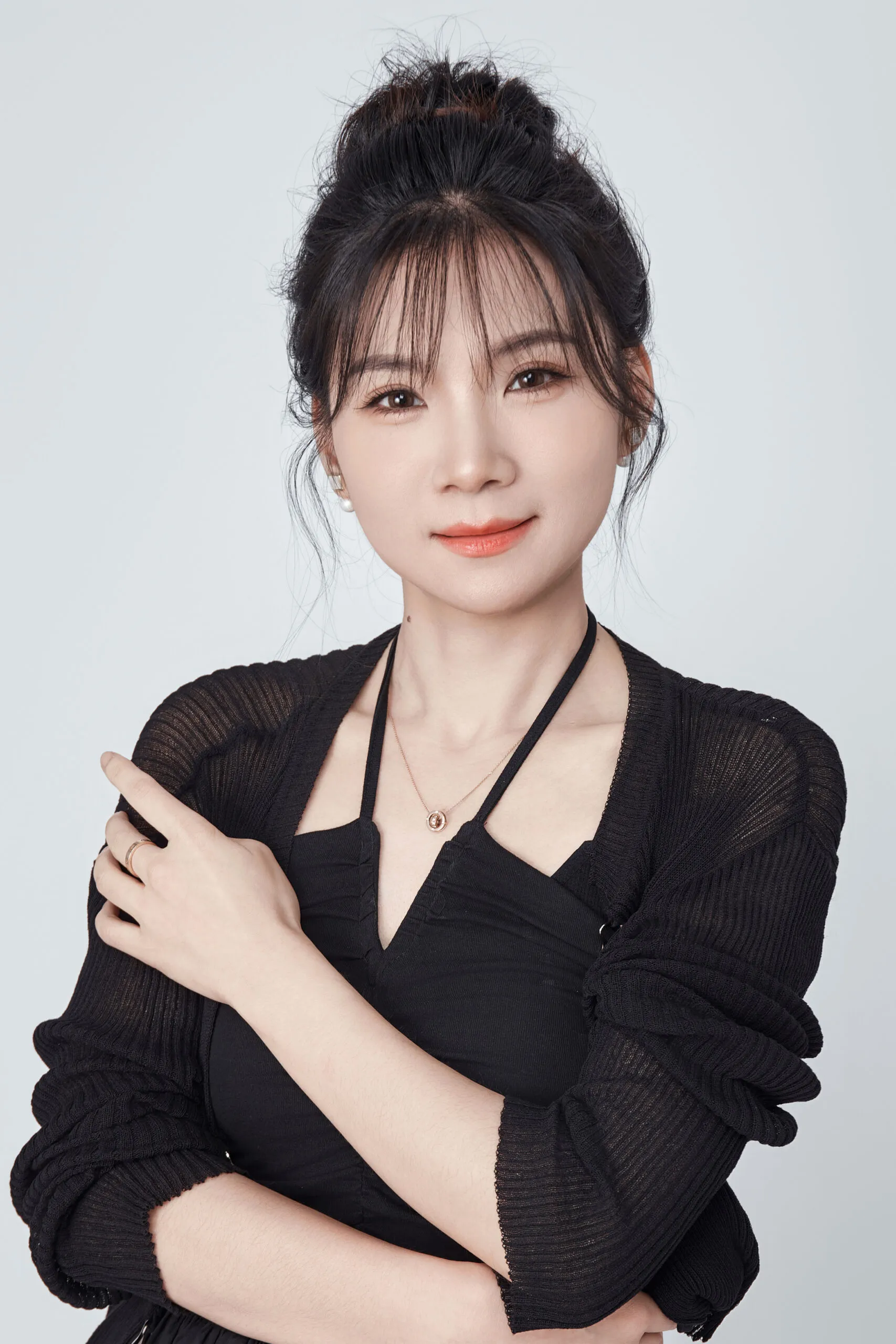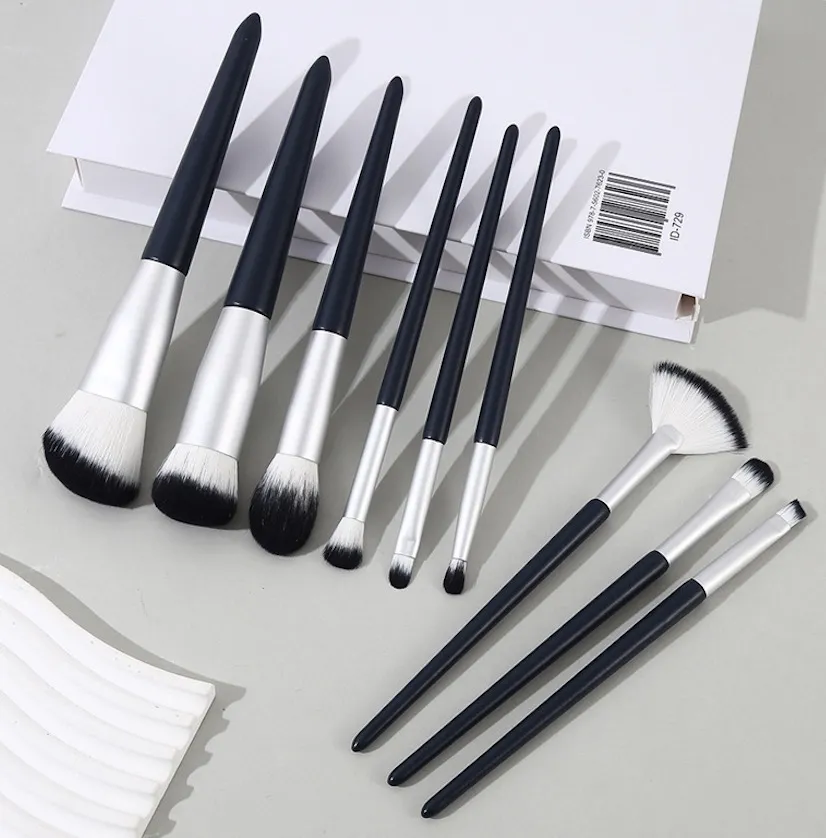I once had a client launch a vegan brush line—only to find out her bristles weren’t vegan. She lost sales and trust. That day, she learned: brush hair tells your brand story.
The hairs on a makeup brush are called bristles. They can be natural (goat, pony, squirrel), synthetic (nylon, taklon, PBT), or hybrid. Each offers unique textures, durability, and compatibility with different makeup formulas.
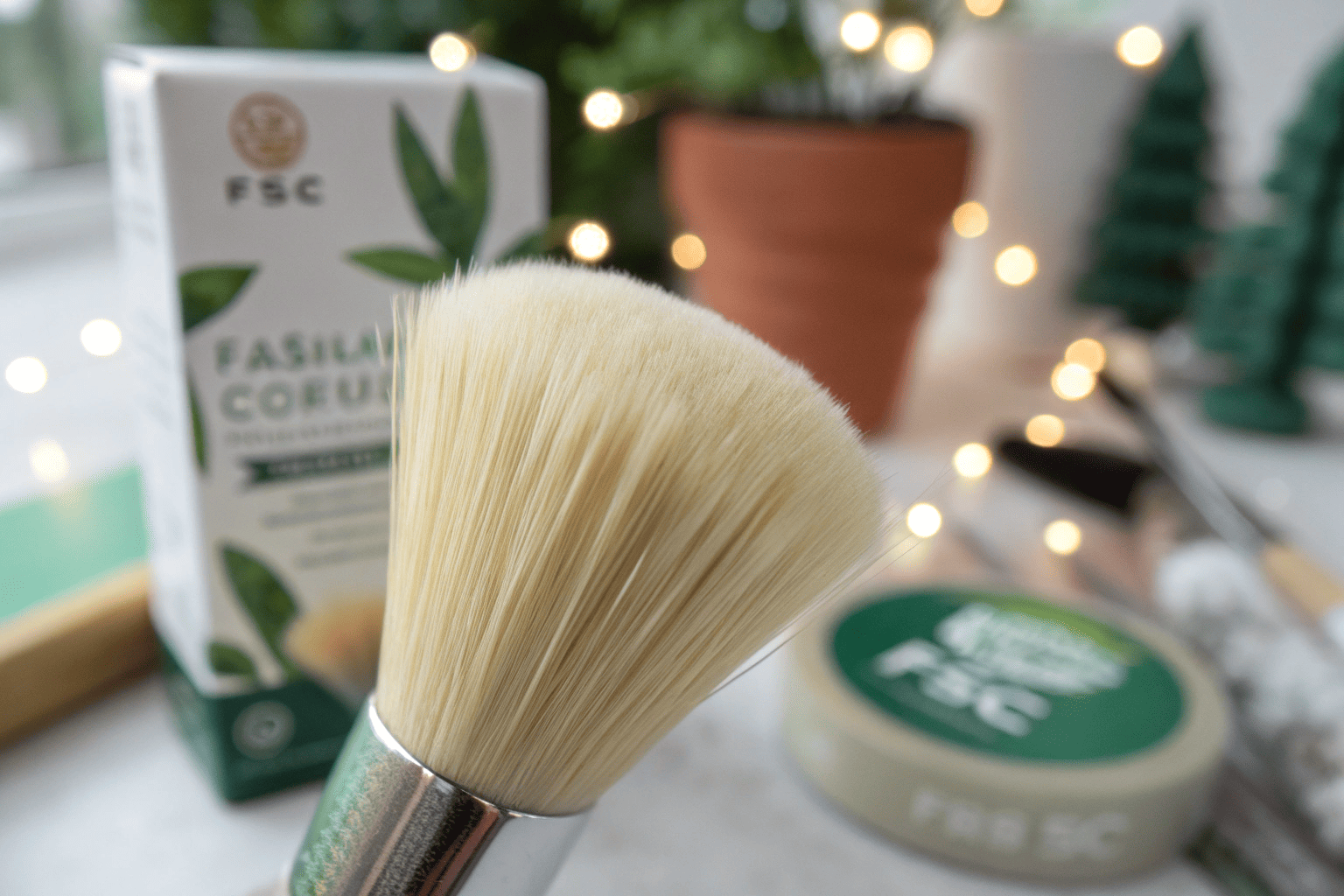
Soft bristle eco-friendly makeup brush
Let’s unpack how brush hair affects makeup performance, quality feel, brand values—and customer trust.
What Are the Parts of a Makeup Brush?
Before picking materials or designing packaging, it’s important to understand how a makeup brush is built from the inside out.
A makeup brush has three parts: the bristles (also called brush hairs), the ferrule (the metal part), and the handle. Each one affects how the brush performs and feels.

The three parts of a makeup brush
Here’s a simple breakdown I often use when training new sourcing teams:
| Part | Function | Material Examples |
|---|---|---|
| Bristles1 | Applies makeup, defines performance | Natural, Synthetic, Mix |
| Ferrule2 | Connects bristles to handle | Aluminum, Copper, Brass |
| Handle | Offers grip, brand expression | Wood, Plastic, Resin |
The bristles are the most important part of a brush. They decide how the brush feels, how it picks up pigment, and how it blends product onto skin. The ferrule holds everything together. A poor-quality ferrule often causes shedding or loose bristles. The handle isn’t just decorative—it affects balance, control, and your branding.
According to MAC Cosmetics Pro Education, subtle changes in brush length and ferrule width can directly impact user technique and makeup results.
What Are the Different Types of Brush Bristles?
If you’re unsure what “PBT,” “kolinsky,” or “taklon” really mean, you’re not alone. I get messages every week from founders asking, “Is goat hair vegan?” or “What’s the difference between synthetic bristles?”
Makeup brush hairs fall into two big categories: animal hair (natural bristles) and man-made fibers (synthetic bristles). Each type gives a different finish, feel, and brand meaning.
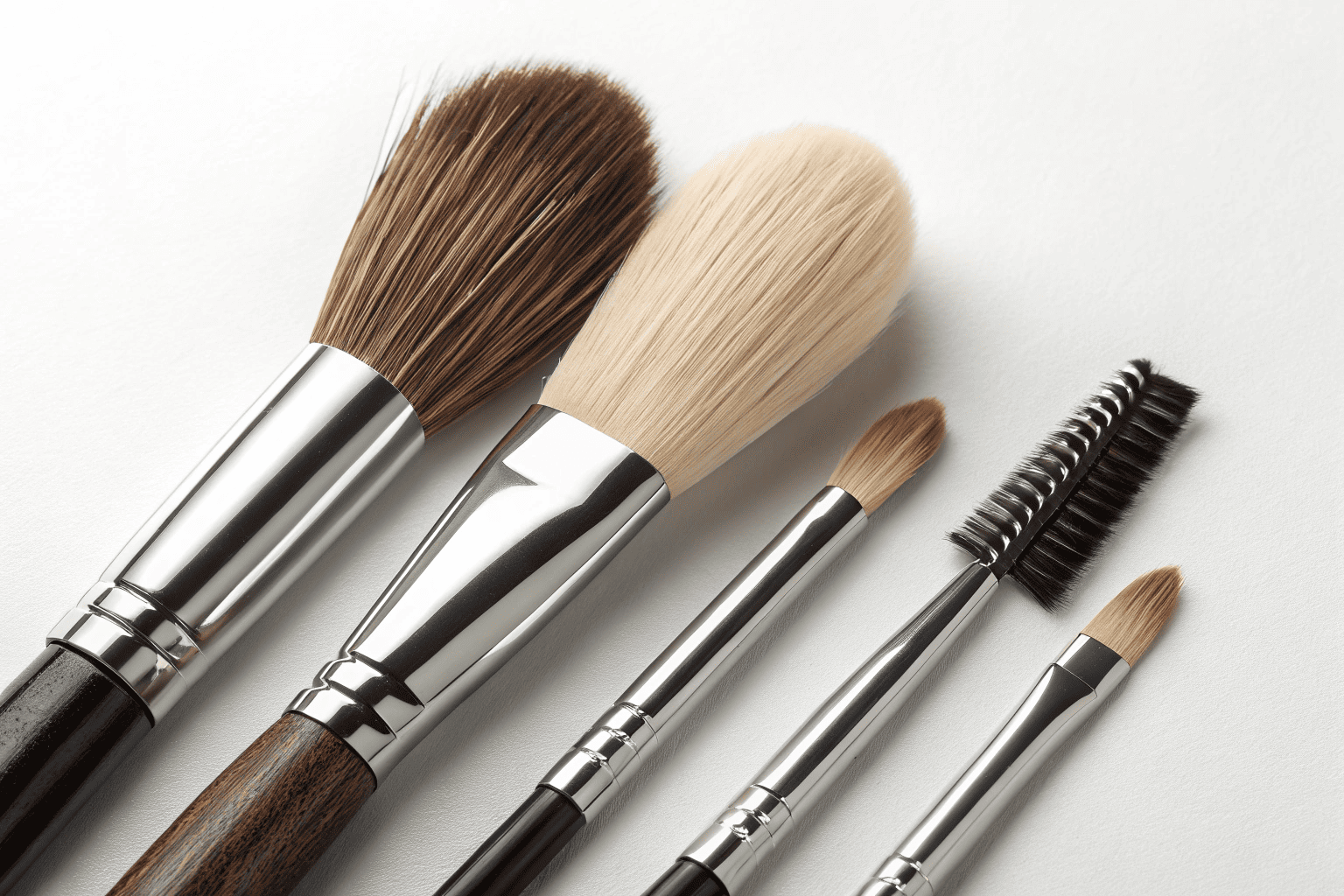
Animal Hair Bristles
These bristles come from real animals. They’re widely used in pro-level brushes, especially for powder makeup. But they’re not vegan and not cruelty-free.
| Bristle Type | Animal Source | Common Use | Benefits | Challenges |
|---|---|---|---|---|
| Goat Hair | Goats | Powder, blush, bronzer | Great pickup, versatile, durable | Not vegan, may shed |
| Squirrel Hair | Squirrels (grey/red) | Finishing, soft blending | Ultra-soft, even diffusion | High cost, fragile |
| Pony Hair | Ponies | Eye brushes, general use | Soft, good shape retention | Slightly coarse, not luxury |
| Kolinsky Sable3 | Weasel (Kolinsky) | Precision, eyeliner, lips | Firm point, smooth lines | Very expensive, not cruelty-free |
| Badger Hair | Badgers | Brows, contour | Stiff, natural-looking application | Coarse, limited supply |
Natural bristles are still favored in many professional setups. Makeup Artist Magazine notes their ability to “move pigment more organically,” especially in theatrical or HD applications. But for ethical brands, animal-derived fibers4 remain a risk.
Synthetic Hair Bristles
These are lab-made fibers. They’re vegan, cruelty-free, and now high-performance enough to rival natural hair. Over the last 5 years, they’ve become the first choice for most private label brands.
| Fiber Type | Polymer Source | Common Use | Benefits | Limitations |
|---|---|---|---|---|
| Nylon | Polyamide | Brow, liner, lip, detail | Firm, holds shape, durable | Can feel stiff, not good for blending |
| Taklon | Polyester | Foundation, blush, blending | Soft, antibacterial, hypoallergenic | Less pickup for powder |
| PBT | Polybutylene Terephthalate | Multi-use, high-end brush lines | Heat-shaped, springy, holds form well | Slightly more expensive |
| Recycled PET | Post-consumer plastic | Eco-line brushes | Sustainable, eco-marketing friendly | May lack softness |
| DuPont™ Natrafil®5 | Patented synthetic fiber | Powder & foundation | Mimics cuticle feel of natural hair | Licensed, may cost more |
According to DuPont™’s materials research and L’Oréal’s Innovation Reports, Natrafil® and PBT are becoming core materials in sustainable and luxury brush lines due to their performance consistency and heat-shaping abilities.
Which Makeup Brush Hair Is Best?
Clients often ask me, “Which hair is the best?” And my answer is always: “It depends.” It depends on your makeup formula, price point, customer values, and even your storage expectations.
The best brush hair depends on what product it’s used for, what feeling you want, and what values your brand stands for.

Match brush hair to your product
| Use Case | Recommended Hair | Reason |
|---|---|---|
| Powder Products | Goat, Squirrel | Holds powder, blends naturally |
| Liquid/Cream | Taklon, PBT | Smooth finish, no product loss |
| Blending/Soft Finish | Squirrel, Hybrid | Gentle on skin, seamless transitions |
| Detail Work | Nylon | Firm tip, precise application |
| Vegan Product Lines6 | PBT, Taklon | Cruelty-free, consistent quality |
Statista’s 2024 Beauty Tools report shows that 67% of brush SKUs launched in Europe now use vegan bristles. For ethical brands, this is no longer a niche—it’s the new normal.
I’ve had clients switch from natural goat to synthetic PBT, not just for claims—but for consistency and batch control. If your customer expects soft, smooth results and you want repeatability in scale, heat-formed PBT7 is often your best bet.
What Are Synthetic Brush Hairs Made Of?
Many of my customers choose synthetic brushes for ethical reasons. But they also want to know what the fiber is made of. Not all synthetics are created equal.
Synthetic bristles are made from man-made fibers like taklon, nylon, or PBT. They are cruelty-free, consistent, and good for creams and liquids.
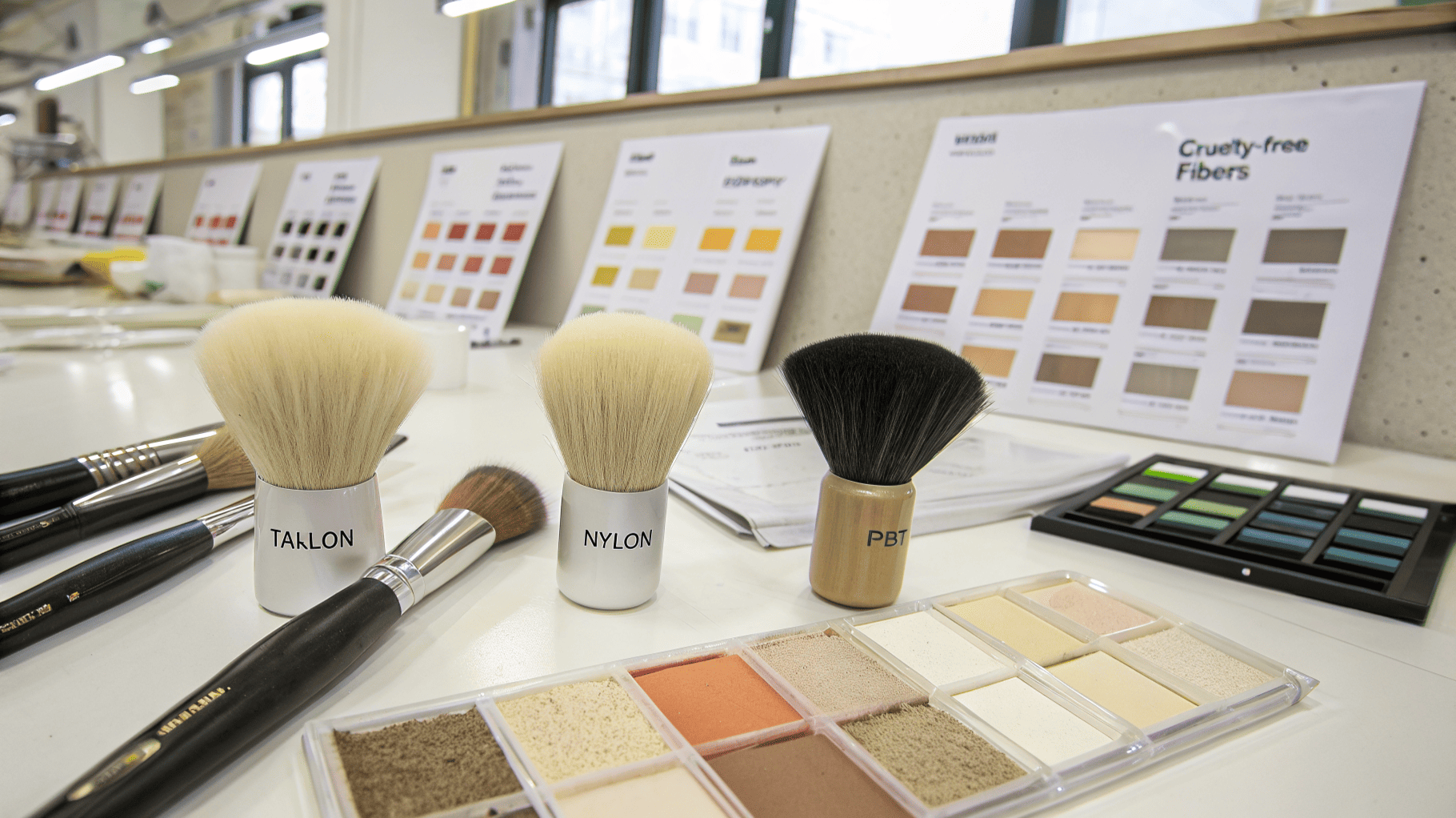
How to choose the right synthetic fiber
Here’s a breakdown:
| Material | What It’s Made Of | Best For | Feel |
|---|---|---|---|
| Nylon | Polyamide | Precise lines, brows, lip brushes | Firm, sometimes stiff |
| Taklon | Polyester derivative | Blending, foundation, beginners | Soft, hypoallergenic |
| PBT | Polybutylene terephthalate | Pro-level brushes, hybrid formulas | Soft, springy, holds shape |
According to Cosmetics Design Europe’s formulation materials report, the move toward PBT8 and eco-polymers9 is accelerating. In my experience, PBT is the most stable across large-scale OEM production. It holds its curl, resists split ends, and gives a luxury feel on the skin.
Conclusion
Choosing the right brush hair shapes how your product feels, performs, and is remembered. If you’re still unsure, I’m here to help you find the perfect fit—no guesswork needed.
-
Explore this link to understand how different bristle materials can enhance your makeup application experience. ↩
-
Discover why the ferrule’s quality is crucial for brush longevity and performance in this informative resource. ↩
-
Discover why Kolinsky Sable is considered a luxury choice for precision in makeup application. ↩
-
Understand the ethical implications of using animal-derived fibers in beauty products. ↩
-
Find out how DuPont™ Natrafil® mimics natural hair and enhances brush performance. ↩
-
Explore the advantages of vegan beauty tools, including ethical considerations and performance benefits. ↩
-
Learn about heat-formed PBT’s properties and why it’s favored for consistency in beauty applications. ↩
-
Explore the advantages of PBT in synthetic fibers, including its stability and luxurious feel, to enhance your understanding of material choices. ↩
-
Learn about eco-polymers and their sustainable benefits in cosmetics, which can help you make environmentally friendly choices. ↩

